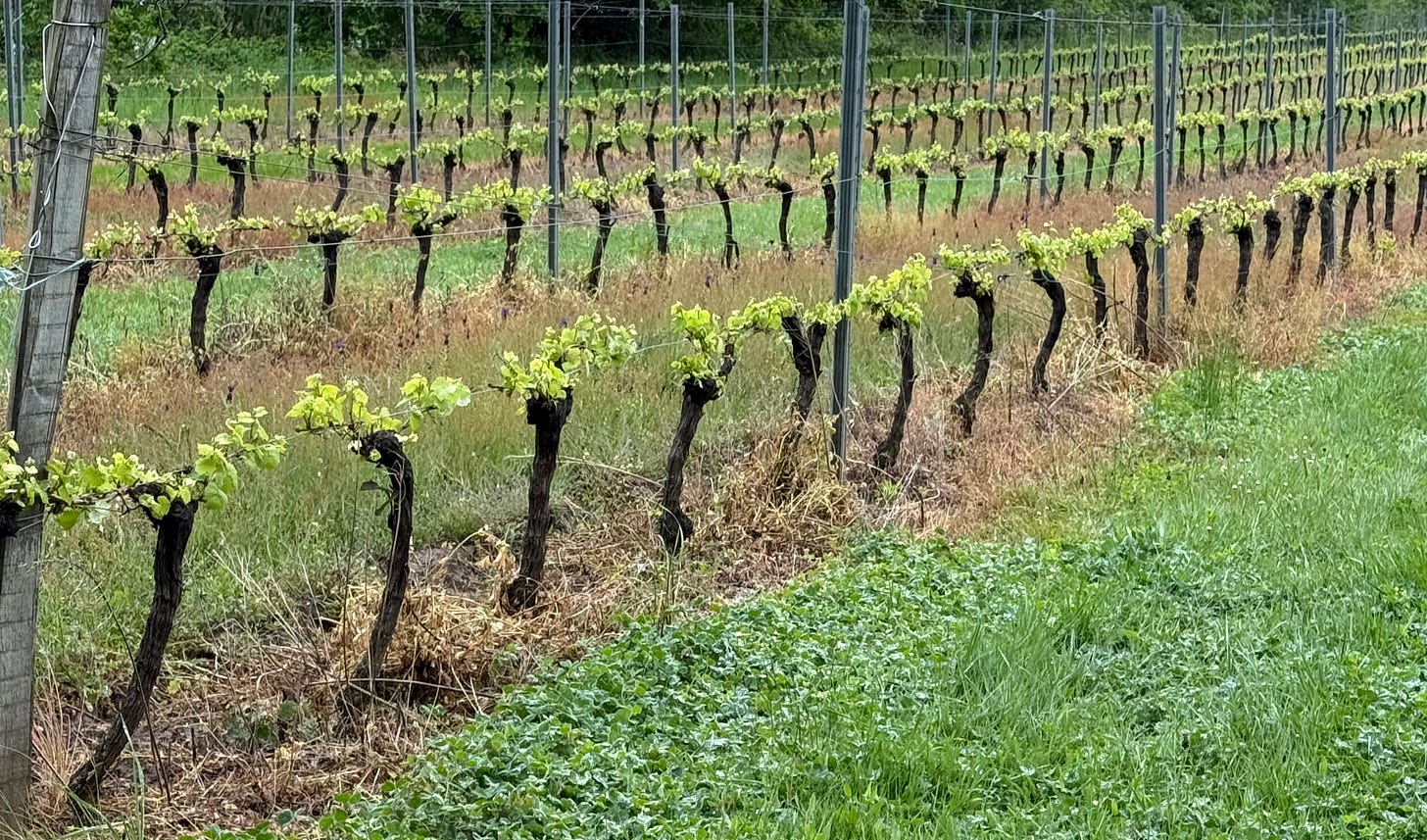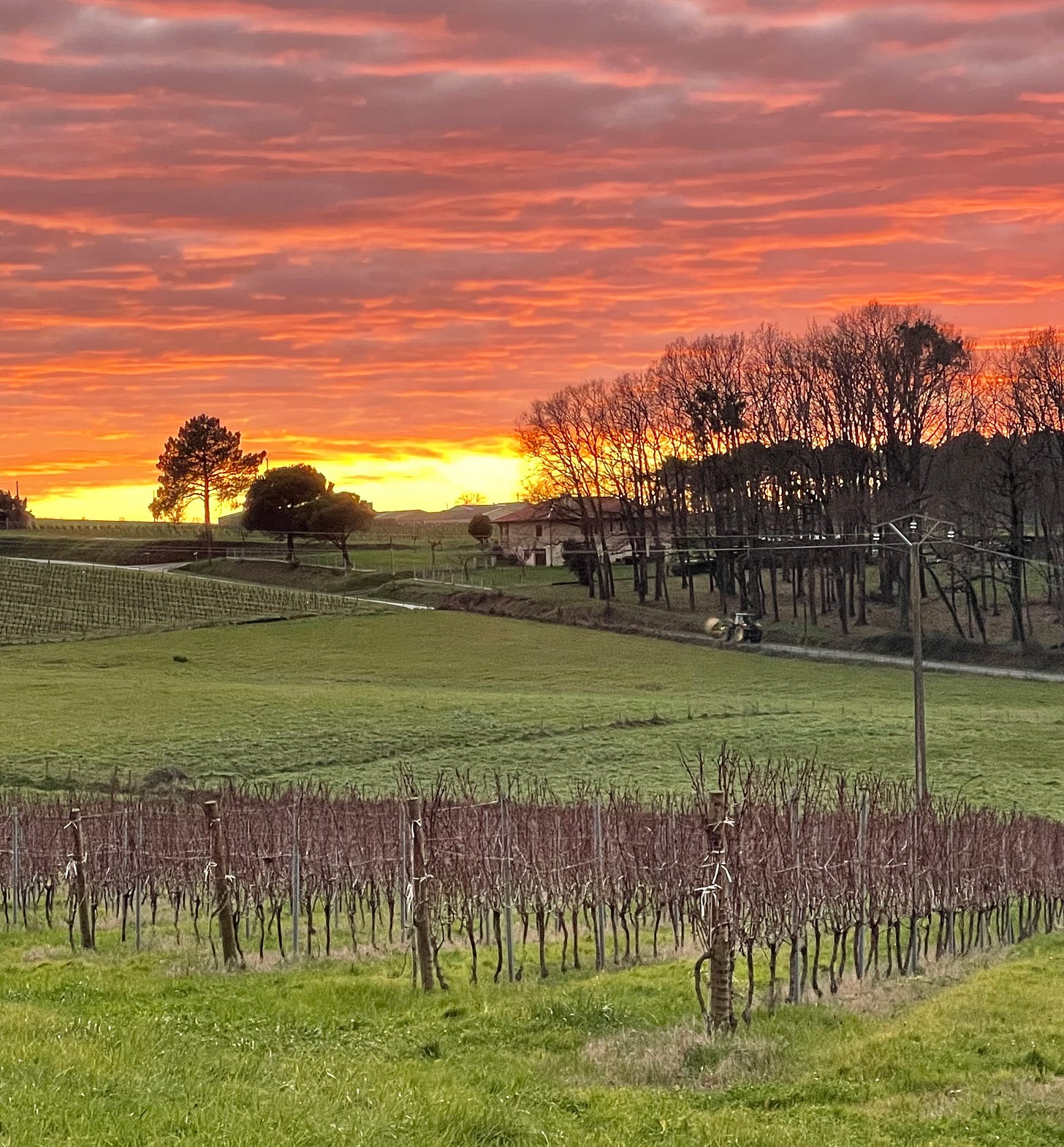The Dordogne River flows lazily out of France’s Massif Central, a region of huge stone and ancient volcanic cliffs, until it meets up with the Garonne River near Bordeaux. There the two rivers become one, flowing 62 miles before disappearing into the Atlantic.
The Garonne, which originates in Spain’s gorgeous Pyrenees Mountains, does not flow lazily. It’s current is much more rapid as though it is a river in a hurry. Anxious, it seems, to get to the sea.
Both rivers flow through some of the richest grape growing regions on earth.
The Dordogne irrigates fertile valleys, hill sides and flatlands, flowing through vineyards bearing such storied names as Bergerac, Saint-Emilion and one of my favorites, Pomerol, which occupies much of the river’s right bank in the region.
A variety of factors make the grapes grown along these two rivers some of the most sought after in the world.
The climate is mostly perfect – cold winters, cool, wet springs and hot summers.
The soil is rich with French limestone allowing excellent drainage.
There is an old saying in the region. “The vines don’t like to get their feet wet.” Here they don’t.
But “mostly perfect” is not perfect and last year (2024 vintage) was one of the most difficult growers had seen going back to 1991.
Hail, heavy relentless rain and then hot weather which created perfect conditions for fungal disease plagued growers last year.
There is cautious optimism among growers so far this year. There is also a dark, and frankly scary, shadow.
“The recent rain is good,” said Caro Feely who owns and operates Chateau Feely with her husband Sean. “It was very dry before.”
The Feely’s run what is called a bio-dynamic winery keeping chemicals, fertilizers and other additives to a minimum.
If taste is any indication, it seems to be working for them.
Charlotte Laurent at Chateau Martet doesn’t mind the rain either as long as it lets up when temperatures start to go up.
“The buds are still very small,” Laurent said. “With good treatment control, we can manage the risk of mildew.”
And so, the drama and dance between the grower and the grape continues as it has for centuries.
Only this time, things seem different.
The peaceful flowing of the Garonne and the Dordogne can be deceptive.
There is a war of sorts going on as President Trump continues to muddy the prospects of one of France’s most important exports.
The wine industry is a $15 billion staple supporting 500,000 jobs in France.
Only aerospace provides more. But aerospace is not woven into French heritage and identity nearly as much as the wine industry.
In his first term, Trump imposed a 25 percent tariff on French wine, a tariff that was suspended under President Biden.
While nothing is certain, it is expected that Trump could re-introduce the wine tariff at at least 10 percent, perhaps more.
France is also dealing with a 20 percent drop in wine trade with China and the Chinese are also planning on increasing duties on French wine coming into China. Tough times.
At a time of year when French farmers are spending more and more of their day studying weather patterns, tariffs have added a new wrinkle,
“It is so hard to know (what will happen) with tariffs,” said Caro at Chateau Feely. “There is a window of 10 percent (tariff) at the moment. But who knows? It’s all very nasty.”
Very Nasty indeed.







